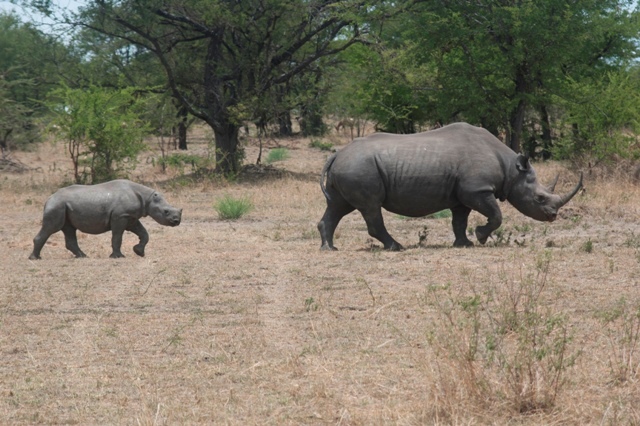Visit Tanzania? It is possible to visit Tanzania all year round, but some places are not accessible during the wet season. June or July offers the great views as the bushes are shorter and animals gather in the water holes making spotting easier.
Even though global warming is making weather predictions harder each year, in theory Tanzania has one “dry season from June to September” which coincides with “winter time in most countries of Europe”, and then a “green season” which has a rainy periods that is around April and May.
Tanzania does not experience summer or winter weathers due to its closeness to equator, instead Tanzania experiences dry and wet seasons. Tanzania monthly maximum temperatures are relatively uniform throughout the year being constant around (27°C to 28°C). So you can imagine what types of clothes you need for Tanzania.
- January-February: for the wildebeest calving (babies),
- June-September: for general wildlife viewing with a chance of seeing the wildebeest crossing of the Grumeti River
- July – The Serengeti will be crowded around the Central areas
- April and May: low season – no crowd, best hotel rates
- June to October: (Little to no rainfall) this is the best time
- March and April: (Peak of wet season) best hotel rates but longer bushes and some areas are not accessible.
In General June to October is the Dry Season and best months to visit Tanzania and November to May is Wet Season, some parts of the parks cannot be accessible and the most interesting thing is wildebeest calving in Late January to February end.
December, January, February and March are the warmest months of the year and all coincide with “summer”. During these months, you can hope for clear morning and evenings, with clouds building up during the day, surrounding the summit in the early afternoon hours. The predictable patterns of weather make it a best time to climb Mount Kilimanjaro on these months.
April and May is the primary rainy season and bring dense cloud formations over the mountain, reducing visibility and comfort. You can expect frequent snowstorms on the summit and heavy rains on the lower slopes during this time and can be strenuous to your body as the temperature turns to below zero.
Mid June to mid October is considered the long “dry” season which can get to be very cold at night. During this “winter” time, there is a persistent dripping belt of cloud around the whole mountain above the forests and scrub zones, leaving the summit and a few other distant peaks poking out the top. Above the cloud belt however, it is usually clear and dry, and can be one of the best time to plan a climb. In late October, the clouds finally give way to the small rain, and until early December the mountain is shrouded in heavy clouds again, with persistent showers from base to summit.
Therefore, we believe the best months to climb Mt Kilimanjaro are January, February, July, August and September (though Kilimanjaro can still be climbed throughout the year!).
Zanzibar and cultural visits can be done throughout the year.
Please note the above weather patterns are simply a guideline and cannot be guaranteed.
We suggest you to bring warm clothes (one or two sweat shirts) as the nights at the lodge before overnight and mornings as you go early for the animal viewing tend to be colder , we recommend this for comfort just in case but sometimes you will find yourselves not using the warm clothes is Tanzania at all.

Reviews
There are no reviews yet.